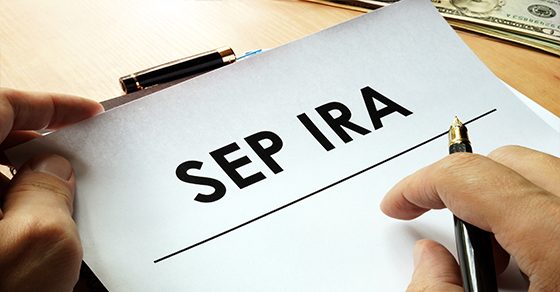Small business owners: A SEP may give you one last 2017 tax and retirement saving opportunity
Are you a high-income small-business owner who doesn’t currently have a tax-advantaged retirement plan set up for yourself? A Simplified Employee Pension (SEP) may be just what you need, and now may be a great time to establish one. A SEP has high contribution limits and is simple to set up. Best of all, there’s still time to establish a SEP for 2017 and make contributions to it that you can deduct on your 2017 income tax return.
2018 deadlines for 2017
A SEP can be set up as late as the due date (including extensions) of your income tax return for the tax year for which the SEP is to first apply. That means you can establish a SEP for 2017 in 2018 as long as you do it before your 2017 return filing deadline. You have until the same deadline to make 2017 contributions and still claim a potentially hefty deduction on your 2017 return.
Generally, other types of retirement plans would have to have been established by December 31, 2017, in order for 2017 contributions to be made (though many of these plans do allow 2017 contributions to be made in 2018).
High contribution limits
Contributions to SEPs are discretionary. You can decide how much to contribute each year. But be aware that, if your business has employees other than yourself: 1) Contributions must be made for all eligible employees using the same percentage of compensation as for yourself, and 2) employee accounts are immediately 100% vested. The contributions go into SEP-IRAs established for each eligible employee.
For 2017, the maximum contribution that can be made to a SEP-IRA is 25% of compensation (or 20% of self-employed income net of the self-employment tax deduction) of up to $270,000, subject to a contribution cap of $54,000. (The 2018 limits are $275,000 and $55,000, respectively.)
Simple to set up
A SEP is established by completing and signing the very simple Form 5305-SEP (“Simplified Employee Pension — Individual Retirement Accounts Contribution Agreement”). Form 5305-SEP is not filed with the IRS, but it should be maintained as part of the business’s permanent tax records. A copy of Form 5305-SEP must be given to each employee covered by the SEP, along with a disclosure statement.
Additional rules and limits do apply to SEPs, but they’re generally much less onerous than those for other retirement plans. Contact us to learn more about SEPs and how they might reduce your tax bill for 2017 and beyond.





